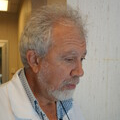Oncogenic Human Papillomaviruses
A special issue of Journal of Clinical Medicine (ISSN 2077-0383). This special issue belongs to the section "Infectious Diseases".
Deadline for manuscript submissions: closed (15 October 2021) | Viewed by 31612
Special Issue Editors
Interests: viral infections; HPV infection; cervical cancer; head and neck cancer; skin cancer; rare tumors; DNA vaccines; non-viral vectors; nucleic acid vectors; biopharmaceuticals; drug delivery systems; cancer therapy; molecular biology of DNA viruses
Special Issues, Collections and Topics in MDPI journals
2. UOSD Tumor Immunol & Immunotherapy, IRCCS Regina Elena National Cancer Institute, Rome, Italy
Interests: human papillomaviruses (HPVs); cervical cancer; DNA vaccine; immunotherapy; RNA silencing; beta beta HPV; head and neck cancer; immunity persistence; cancer therapy; E7 oncoprotein
Special Issue Information
Dear Colleagues,
After the introduction of effective preventive HPV vaccines into clinical practice, the belief could have been generated in the scientific community that the HPV problem is now solved. Nothing could be more wrong. In fact, although the incidence of cervical cancer is decreasing, that of HPV-associated cancer in oropharynx is increasing, representing a significant public health problem for which to date we do not have a definitive therapeutic strategy. The recent WHO call for the elimination of cervical cancer through preventive vaccination and screening highlighted the need to continue to implement these cornerstones in the fight against HPV. Furthermore, even in the most optimistic hypothesis of optimal global vaccination coverage, millions of patients currently suffering from HPV will surely require new and more effective therapeutic interventions. Developing new therapies also requires the implementation of technologies and procedures (i.e., in silico) that can ensure the validation of discovered treatments prior their use in humans. Finally, other HPVs besides the already known “high risk” types (i.e., beta HPV) may play a role in carcinogenesis, with different molecular mechanisms that require further studies in order to evaluate a possible preventive and/or therapeutic intervention against them.
Recent “omics” technologies have given and will give a further contribution to the identification of the genetic and epigenetic alterations induced by HPV in the host cell as well as of the complex molecular networks activated by viral proteins.
We welcome the submission of research and review articles on the molecular mechanisms contributing to HPV-induced carcinogenesis to bring together expert opinion and new advances from across the field in a Special Issue. We welcome proposals covering any relevant clinical or translational topics, including epidemiology, immune responses, viral oncogenes in cell transformation, virus and host mutational profiles, methylation, miRNA expression profiles, and new therapies including vaccines against HPVs that are related to tumor pathologies of different anatomic localization (i.e., anogenital, oropharyngeal, cutaneous, conjunctival, and other localizations).
Prof. Dr. Aldo Venuti
Dr. Francesca Paolini
Guest Editors
Manuscript Submission Information
Manuscripts should be submitted online at www.mdpi.com by registering and logging in to this website. Once you are registered, click here to go to the submission form. Manuscripts can be submitted until the deadline. All submissions that pass pre-check are peer-reviewed. Accepted papers will be published continuously in the journal (as soon as accepted) and will be listed together on the special issue website. Research articles, review articles as well as short communications are invited. For planned papers, a title and short abstract (about 100 words) can be sent to the Editorial Office for announcement on this website.
Submitted manuscripts should not have been published previously, nor be under consideration for publication elsewhere (except conference proceedings papers). All manuscripts are thoroughly refereed through a single-blind peer-review process. A guide for authors and other relevant information for submission of manuscripts is available on the Instructions for Authors page. Journal of Clinical Medicine is an international peer-reviewed open access semimonthly journal published by MDPI.
Please visit the Instructions for Authors page before submitting a manuscript. The Article Processing Charge (APC) for publication in this open access journal is 2600 CHF (Swiss Francs). Submitted papers should be well formatted and use good English. Authors may use MDPI's English editing service prior to publication or during author revisions.
Keywords
- human papillomaviruses (HPVs)
- epidemiology
- immune responses
- viral oncogenes
- virus/host mutational profile
- methylation
- miRNA expression profile
- new HPV therapies
- therapeutic/preventive vaccines







